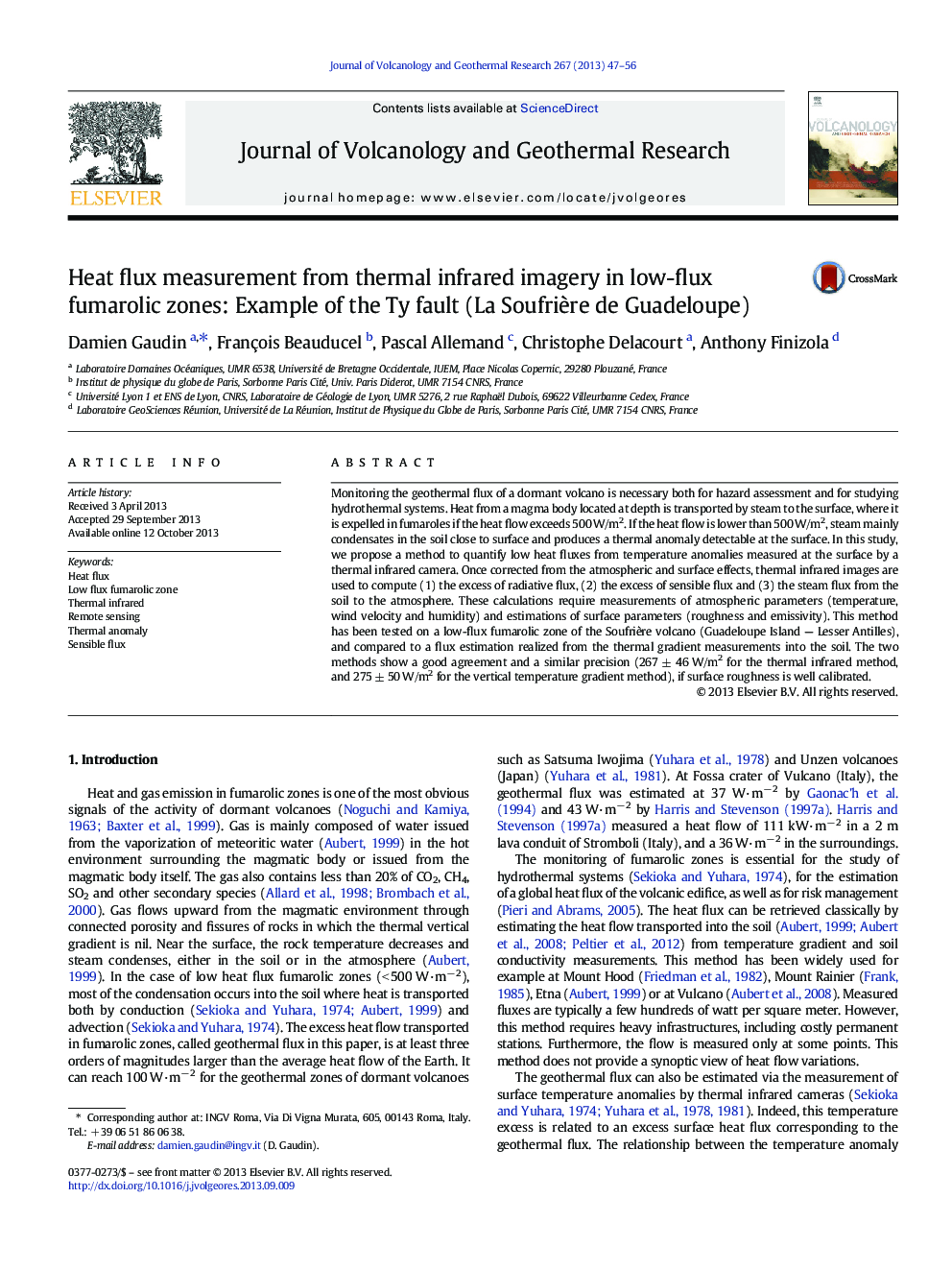| کد مقاله | کد نشریه | سال انتشار | مقاله انگلیسی | نسخه تمام متن |
|---|---|---|---|---|
| 4713303 | 1638354 | 2013 | 10 صفحه PDF | دانلود رایگان |

• Heat flux from sub-fumarolic zones is estimated using thermal infrared images.
• This estimation requires the measure of surface and atmospheric parameters.
• Our method was tested on a sub-fumarolic zone of Soufrière volcano of Guadeloupe.
• The precision is around 20% and similar to estimations from temperature gradients measurements.
Monitoring the geothermal flux of a dormant volcano is necessary both for hazard assessment and for studying hydrothermal systems. Heat from a magma body located at depth is transported by steam to the surface, where it is expelled in fumaroles if the heat flow exceeds 500 W/m2. If the heat flow is lower than 500 W/m2, steam mainly condensates in the soil close to surface and produces a thermal anomaly detectable at the surface. In this study, we propose a method to quantify low heat fluxes from temperature anomalies measured at the surface by a thermal infrared camera. Once corrected from the atmospheric and surface effects, thermal infrared images are used to compute (1) the excess of radiative flux, (2) the excess of sensible flux and (3) the steam flux from the soil to the atmosphere. These calculations require measurements of atmospheric parameters (temperature, wind velocity and humidity) and estimations of surface parameters (roughness and emissivity). This method has been tested on a low-flux fumarolic zone of the Soufrière volcano (Guadeloupe Island — Lesser Antilles), and compared to a flux estimation realized from the thermal gradient measurements into the soil. The two methods show a good agreement and a similar precision (267 ± 46 W/m2 for the thermal infrared method, and 275 ± 50 W/m2 for the vertical temperature gradient method), if surface roughness is well calibrated.
Journal: Journal of Volcanology and Geothermal Research - Volume 267, 1 November 2013, Pages 47–56